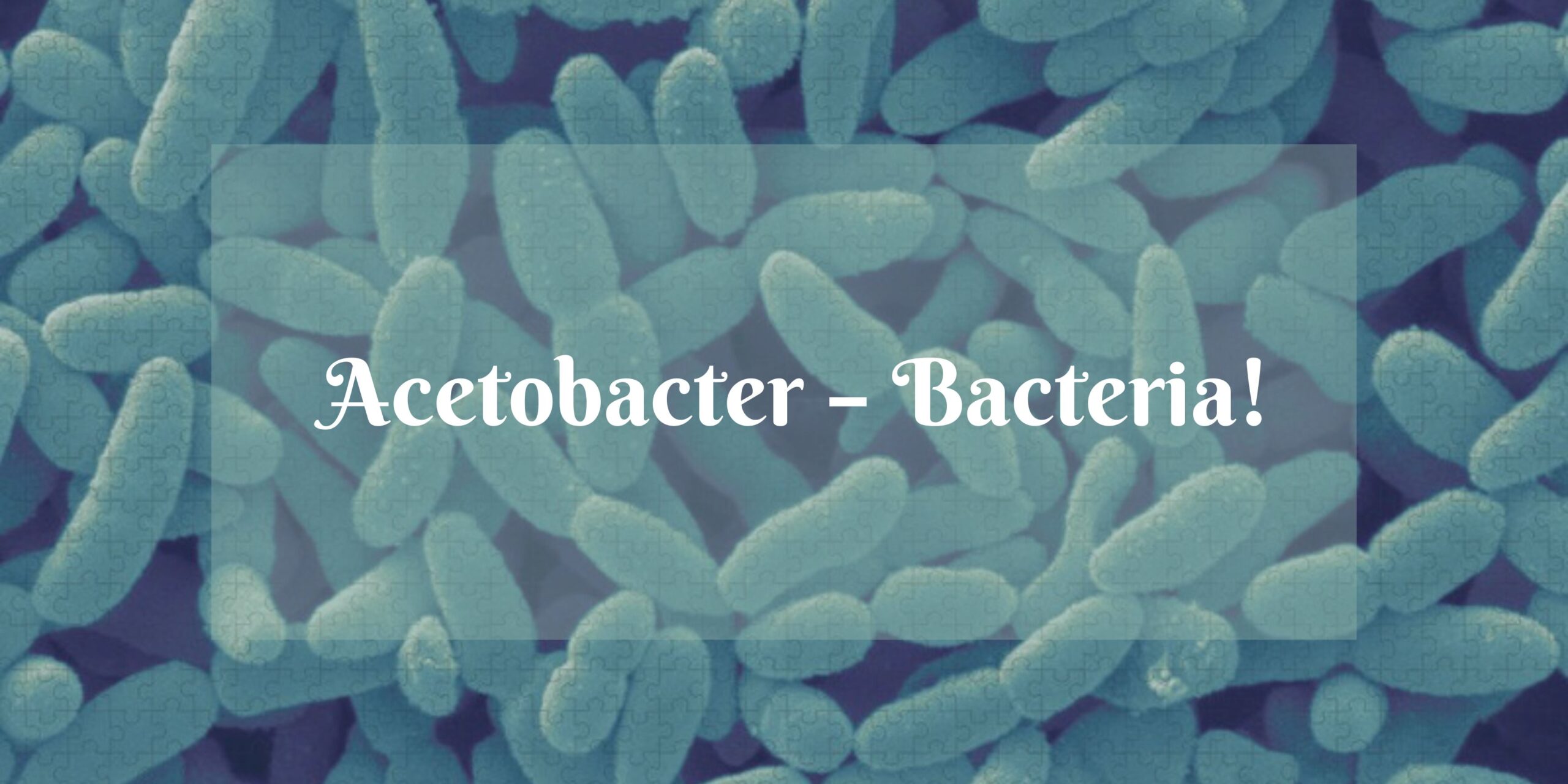
Acetobacter – bacteria!
The benefits of acetobacter are described in detail in this post. Acetobacter is a group of bacteria that make acetic acid. There are many beneficial bacteria and acetobacter is one of them. Acetic acid bacteria are different because they can turn ethanol into acetic acid in the presence of oxygen. Acetobacter stands out from the rest because it can turn lactate and acetate into carbon dioxide and water. Acetobacter bacteria were found in vinegar-making factories and are often used as starter cultures for fermentation.
Acetobacter causes bacterial rot in pears and apples. This causes the fruit to turn different shades of brown and the tissue to break down.
Acetobacter can cause both significant economic gains and losses. This last part is caused by the fact that many things that are good for growth also go wrong. The best example of this is the acidification of wine by air, which is how vinegar is made.
Acetobacter aceti is vital to the economy because it turns the ethanol in wine or cider into acetic acid, which is then used to make vinegar.
Acetobacter and wine
Most wines have a volatile acid called acetic acid. The benefits of acetobacter include winemaking. Acetobacter spp. can be found in wine must, on the skins of grapes, and on grapes that have been damaged. Acetic acid can only form when there is enough oxygen, like on fruits, juices, and mashes.
Due to the lack of oxygen, it is rare for grapes to go bad during the winemaking process. Concentrations of acetic acid, ethyl acetate, and d-lactate that are higher than normal show that it is there. The relationship between acetic acid and ethyl acetate is good. Acetobacter spp., which makes dextran, makes sweet white wines thick and slimy.
Most alcoholic drinks with less than 15% ethanol have the potential to make acetic acid. The less likely a drink gets a bacterial infection, the more alcohol it has. Alcohol concentrations of 10% stop the growth of A. aceti and A. xylinum strains. Acetobacter infections are marked by a rise in both volatile and non-volatile free organic acids and a drop in the amount of glucose and ethanol in the body.
Acetobacter as a bio-fertiliser
With the help of technologies from the Green Revolution, modern agriculture has become more and more dependent on a steady supply of synthetic inputs, mainly chemical fertilisers, which are made from coal and petroleum and have many hazards. Because these synthetic inputs have been used too much and out of balance, bad things have happened. Because of this, harmless inputs have been found, such as bio-fertilisers. Using natural products like bio-fertilisers to grow crops will help protect the health of the soil and the quality of the crops.
Bio-fertilisers are ready-to-use, live mixtures of beneficial microorganisms. Microbes play a critical role in farming. When applied to seed, root, or soil, they make nutrients more available through their biological activity. And they help build up the microflora, which improves the health of the soil in general. Enhancing soil fertility is included in the benefits of acetobacter.
Bio fertilisers for sugarcane include Acetobactor, Phosphate Solubilizing Bacteria (PSB), Azoospirillum, and Azotobactor. Bio-fertiliser products must have a good strain in a large enough population and be free of microorganisms that could cause contamination.
Benefits of Acetobacter
Acetobacter takes the place of 25% of the nitrogen and phosphorus chemicals. It makes plants grow better. It gets life going in the soil. It brings the soil back to its natural fertility and maintains soil health. It keeps drought and some diseases that come from the soil at bay.
Increasing crop yield is one of the benefits of acetobacter. It makes crops produce 20–30% more yield. Fertilisers should be put down in the right place, in the right amount, and at the right time in the crop cycle. Bio-fertilisers can be used on plants by treating the seeds and the soil or by using drip irrigation.
As a seed treatment, 200 gm of Azotobacter and Phosphotika per 10 kg of seed is good for mustard, cotton, maise, wheat, sorghum, and other crops. In 300–400 ml of water, 200 g of nitrogenous bio-fertiliser and 200 g of Phosphotika are mixed well. Before the seeds dry in the shade, this paste is spread on ten kilogrammes of them. It’s important to plant the treated seeds as soon as possible.